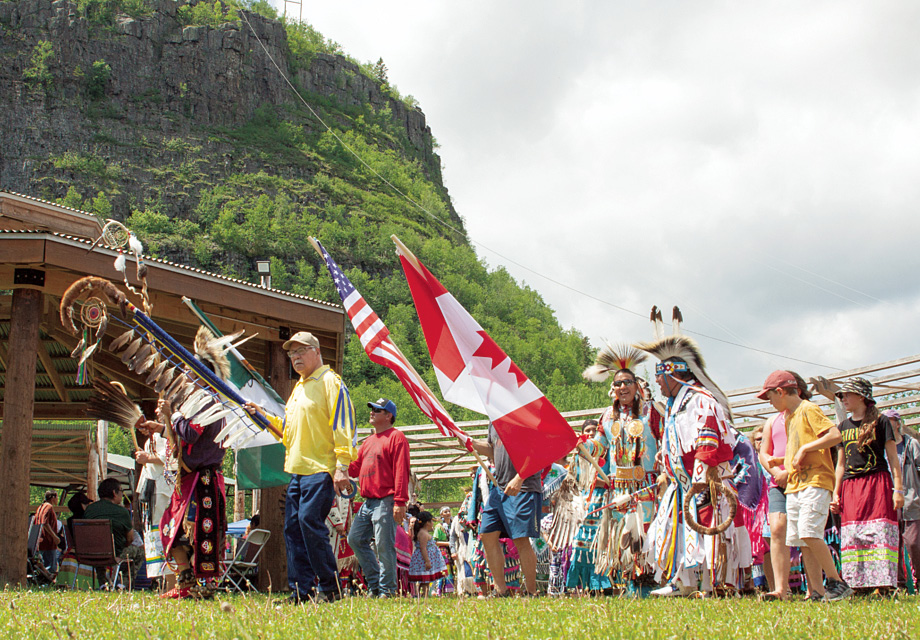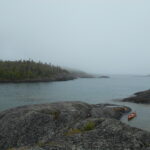National Indigenous Peoples Day is an important day for individuals to celebrate and recognize the contributions and achievements of Indigenous peoples in Canada.
The day, celebrated on June 21, was first recognized as National Aboriginal Day in 1996 by then Governor General of Canada Roméo LeBlanc. The day was later renamed National Indigenous Peoples Day in 2017 and is now widely celebrated throughout the country.
“I think the intent of it, when it started, was to help educate and advocate for Indigenous acknowledgment in Canada,” Kathleen Sawdo, the founder of Sister Bear Designs, a three-generation family-run business in Thunder Bay, said. However, she added, Indigenous people in Canada have been celebrating the significance of June 21 long before the formal governmental designation.
Sawdo, who is also a member and knowledge holder of the Fort William First Nation in Canada, explained that June is known in her culture as the month of the Strawberry Moon. The entire month is seen as where the “heartbeat begins” and is accompanied by hard work and tending to the land.
“You start harvesting your berries. You’re out on the land. You’re fishing. You see a lot of growth,” Sawdo said. But typically, she added, “a lot of ceremony happens during that time. It’s a good time traditionally to gather.”
The celebrations and gathering all come together as it coincides with the summer solstice, the longest day of the year, which tends to fall between June 20-22. In addition to families and elders gathering for celebrations, Sawdo said the summer solstice is also a time to come together to address community needs. “We do that during the summer solstice because it’s a good time to bring people together, and easier logistically.”
Many Indigenous people would gather at Animikii-wajiw (Mount McKay), a 1,604-foot mountain near Lake Superior in Thunder Bay. The mountain is a sacred spot for many Indigenous people and is where naming ceremonies, weddings, elder gatherings, pow wows, and connecting with different communities would occur. In addition, Sawdo said that medicine used by Indigenous people grows specifically on the mountain and is another reason why people would traditionally come together at that location.
For many generations, Indigenous people have returned to gather at Animikii-wajiw each summer solstice to celebrate. This time of year is significant to Sawdo, who said she appreciates having the time to reconnect with the community. “That helps your spirit, especially in modern times, now. We have to take extra care and walk with intention. We have to make that time to reconnect the land in order to learn to live in a good way.”
The intent of reconnecting with the land and community typically occurs during a pow wow, where individuals come together to celebrate and honor their heritage through traditional music, dance, food, and crafts. Pow wows begin with a grand entry, where dancers in colorful regalia parade into the central area, often adorned with feathers, beads, and decorative items. Sawdo described that the dancers and elders enter the established circle in a procession or specific order.

During the pow wow, dancers showcase their skills and regalia in different styles of dance. Each dance style has unique moves and accompanied regalia, which often hold specific meanings and origins within Indigenous cultures.
“When it comes to regalia or what you’re wearing when you dance, a lot of the time, people will dream it,” Sawdo said. “So, they’ll feel it in their heart.”
She explains that if someone is unable to dream of their colors, an elder who has the gift of receiving colors for people will choose the colors for them. “There’s a lot of thought behind it.” In addition, Sawdo explains a lot of thought goes into selecting a dance to perform during a pow wow. “When you find the dance that suits you, or you’re called to, then you start making your regalia.”
This process of finding a dance and choosing colors for regalia is often a communal effort. “A lot of the time, your community helps with that. It’s a family effort,” Sawdo said.
Sawdo said she understands that individuals who have never attended a pow wow before might be hesitant or unsure of how to interact. However, she said the best way to support Indigenous people on National Indigenous Peoples Day is to “come to a pow wow.” She adds, “Come in there with a good heart and a good mind. And let people know this is your first time. They’ll help lead you.”
Sawdo encourages everyone who is interested in attending a pow wow to do so. However, there are some general etiquette rules she recommends. The first is to refrain from taking photos or videos or to ask permission before pulling your phone out. Some certain ceremonies or prayers are not allowed to be photographed or videotaped. Most importantly, Sawdo said, “Come as you are, but be respectful.” She recommends exploring the local vendor booths, enjoying the food, and asking all sorts of questions if you have them.
Attending a pow wow on National Indigenous Peoples Day is undoubtedly a positive way to show support for Indigenous communities. However, Sawdo said non-Indigenous Canadians or individuals visiting Thunder Bay could also support Indigenous communities by seeking out safe spaces where Indigenous art is displayed, including art galleries and cultural centers, or visiting stores such as Sister Bear Designs. She describes her family-run business as a “cultural learning and shopping experience.” Her family creates different beadwork jewelry, leatherwork, contemporary items from traditional foods, and traditional medicines for elders.

“Coming to Thunder Bay is huge. The cultural diversity is a different experience than in the States, in that our reserve systems or governments are quite different,” Sawdo said. “The history of Indigenous people throughout that time is very different compared to the U.S.”
Although significant progress has been made since the recognition of Indigenous communities in 1996 in Canada, Sawdo said she thinks education and awareness efforts are “still evolving.” Fortunately, however, throughout the past two decades, schools have adopted teachings and education focused on Indigenous communities during the entire month of June. In addition, the expansion of television and the Internet has helped Indigenous communities increase exposure and awareness concerning past and current issues in the country.
Not only is National Indigenous Peoples Day an opportunity to celebrate Indigenous culture, but it is also a time to reflect on the ongoing challenges Indigenous peoples face in Canada.
Canada has an unsettling past concerning Indigenous communities, particularly children and residential schools. Between 1880 and much of the 20th century, more than 150,000 children from hundreds of Indigenous communities across Canada were taken from their families and sent to a residential school, according to a 60-minute report from CBS News. These schools aimed to assimilate Indigenous children into mainstream Canadian culture and eradicate Indigenous languages, cultures, and traditions. It wasn’t until 1998, two years after the first formal recognition of National Aboriginal Day, later renamed National Indigenous Peoples Day, that the last of Canada’s 139 residential schools closed.
Although many Canadian Indigenous communities have experienced and continue to experience many hardships, Sawdo is hopeful for the future. “I think there’s a lot of changes coming.” Some of the changes she is optimistic about include reclaiming Indigenous identity, language, and land. “Canadian First Nations are asserting their rights in a good way, with government and working towards reconciliation. I see a lot of positive change happening.”
She adds, “It took generations to get us to the point where we’re at now, and it’s going to take generations to get us where we should be.”
To learn more about attending a Fort William First Nation pow wow and any upcoming events, visit: fwfn.com.




